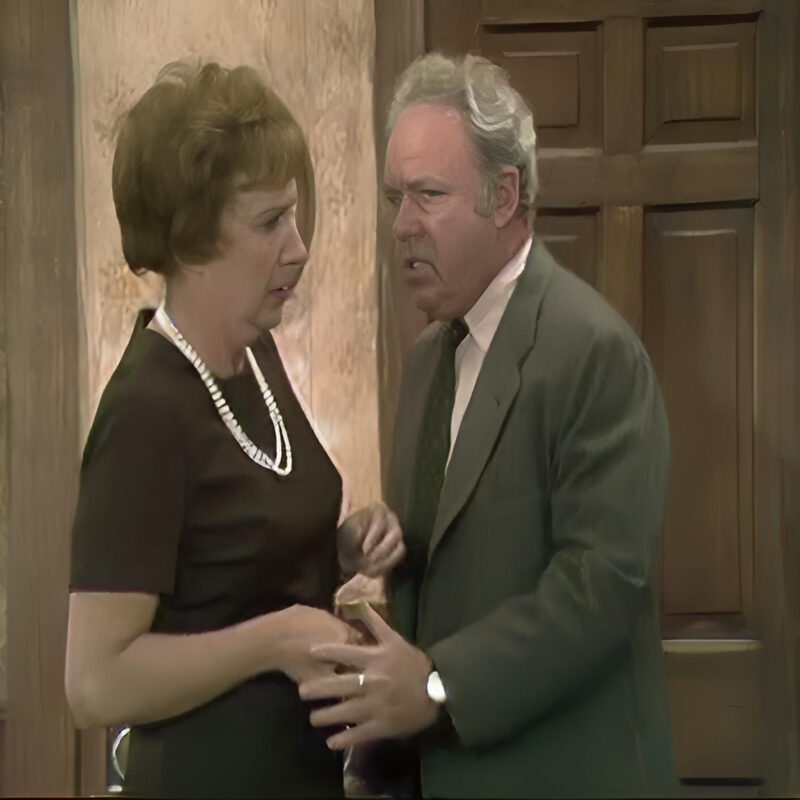
Renowned journalist and political commentator Joy-Ann Reid has offered a critical analysis of the iconic television show “All in the Family,” particularly focusing on its approach to race. Reid, known for her incisive commentary on social and political issues, provides a nuanced perspective on how the show handled race relations during its run from 1971 to 1979.
“All in the Family” was groundbreaking for its time, daring to address social issues such as racism, sexism, and homophobia through the lens of comedy. At the heart of the show was Archie Bunker, a character whose bigoted views were meant to highlight the absurdity and harm of such prejudices. However, Reid argues that the show’s comedic framing often undermined its message.
“Archie Bunker was a product of his time, and the show attempted to use his ignorance to spark conversations about bigotry,” Reid explains. “But the risk with comedy, especially when dealing with such serious issues, is that it can sometimes downplay the severity of the prejudices it portrays.”
Reid points out that while the show aimed to critique racism, it often fell short by not fully exploring the impact of racism on the lives of minority characters. “The minority characters were frequently used to expose Archie’s bigotry, but their own stories and struggles were often secondary to the primary narrative,” she notes. “This approach can inadvertently reinforce stereotypes rather than dismantle them.”
One of Reid’s main critiques is the portrayal of the Jeffersons, who started as the Bunkers’ neighbors before getting their own spin-off show. “The Jeffersons were a significant addition, but their character development was initially limited by their role in relation to Archie,” Reid says. “Their storylines often revolved around reacting to Archie’s racism rather than showcasing their own experiences and perspectives.”
Reid also addresses the potential desensitization that can occur when serious issues are repeatedly framed as jokes. “Comedy can be a powerful tool for social change, but it can also lead to a normalization of harmful stereotypes if not handled carefully,” she warns. “The laughter generated by Archie’s ignorant remarks could sometimes overshadow the critical reflection needed to address the root causes of those prejudices.”
Despite these criticisms, Reid acknowledges the importance of “All in the Family” in breaking new ground for television. The show was among the first to bring discussions of race and bigotry into American living rooms, prompting viewers to confront uncomfortable truths. “For its era, ‘All in the Family’ was revolutionary in its willingness to tackle taboo subjects,” Reid concedes. “It opened the door for more complex portrayals of social issues in media.”
Looking forward, Reid emphasizes the need for modern media to learn from the past. “We need to move beyond surface-level critiques of racism and offer more in-depth, authentic representations of minority experiences,” she asserts. “This means creating spaces for minority voices to tell their own stories, free from the constraints of being defined by their interactions with prejudice.”
Reid also highlights the role of media in shaping public perceptions and the responsibility that comes with it. “Television and film are powerful tools for education and empathy,” she says. “We must use them to challenge stereotypes, foster understanding, and promote equality.”
In conclusion, Joy-Ann Reid’s critique of “All in the Family” underscores the complexities of addressing race through comedy. While the show made significant strides in bringing social issues to the forefront, its approach also highlighted the delicate balance needed when using humor to tackle serious topics. Reid’s insights call for a more thoughtful and comprehensive representation of race in media, urging creators to craft narratives that both entertain and enlighten.
